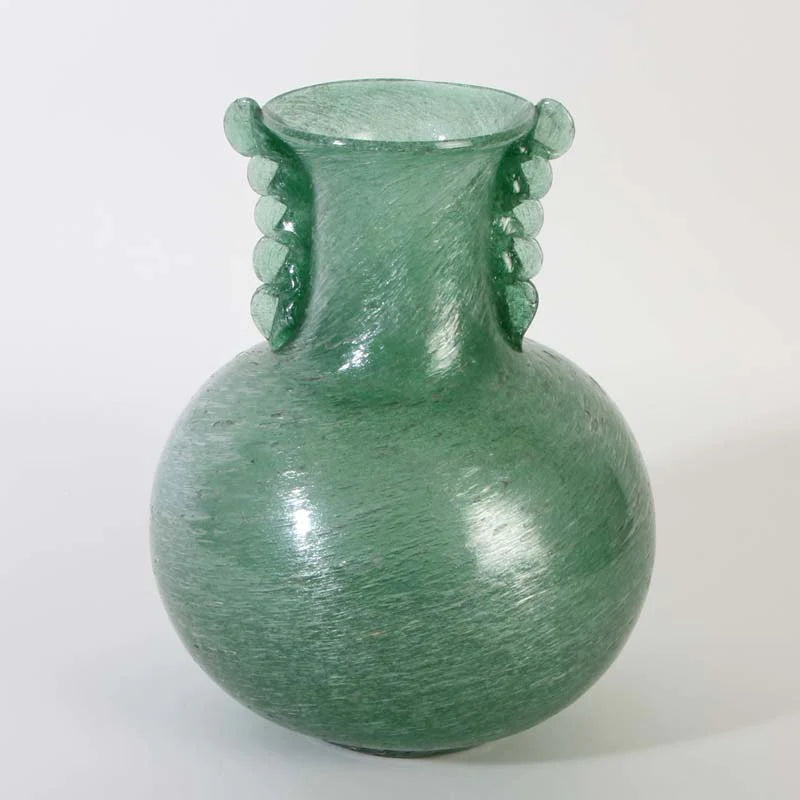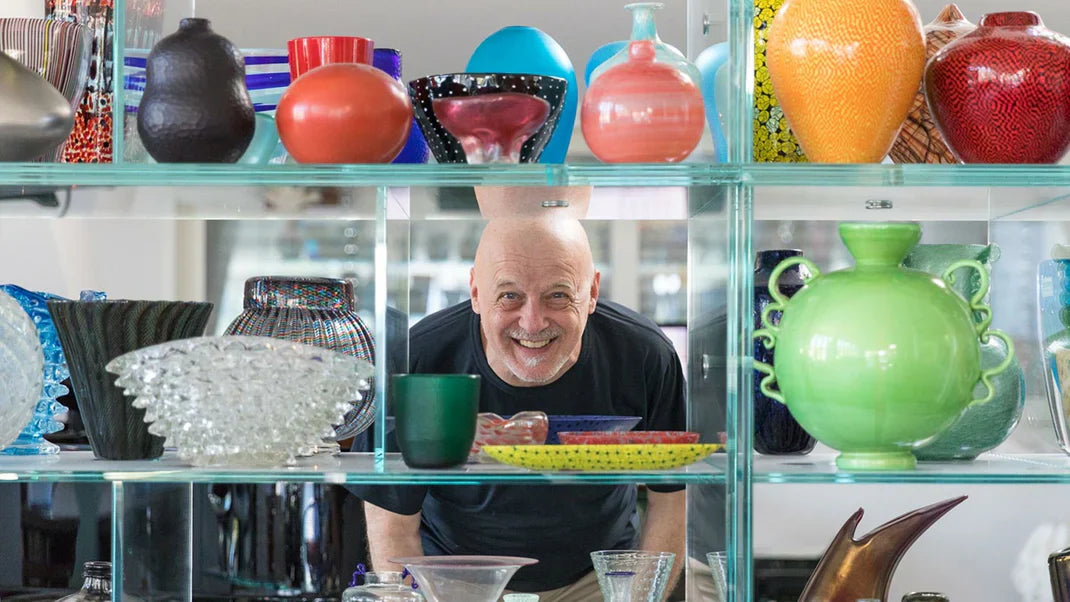Napoleone Martinuzzi (1892-1977)
Napoleone Martinuzzi, an accomplished sculptor, designer, and enterprising figure in the glass industry, embarked on his artistic journey by studying at the prestigious Academy of Fine Arts in Venice. His talent and creative air caught the attention of the renowned poet D'Annunzio, who became an ardent admirer of Martinuzzi's work. Starting from 1917,
Martinuzzi crafted a myriad of artistic pieces specically for D'Annunzio, showcasing his exceptional craftsmanship and artistic vision.
“That the design is splendid, even more so than the glass itself.”
Gabriele D'Annunzio on Napoleone Martinuzzi
Friendship between Martinuzzi and D'Annunzio
This quote by D'Annunzio underscores his appreciation for the designs and the artistic vision of Napoleone Martinuzzi, particularly with regard to his work in glass art at Venini. It suggests that D'Annunzio considered the creative idea behind the glass objects to be as significant, if not more so, than the material itself.
There was a close relationship and lively correspondence between D'Annunzio and Martinuzzi, who also created several works for D'Annunzio's estate 'Il Vittoriale degli Italiani'. D'Annunzio greatly valued Martinuzzi and referred to him as a “master from Murano who shapes glass and marble with the same artistic measure, who works glass and bronze with the same fire“.
Gabriele D'Annunzio owned some of these "cactus" sculptures, further adding to their historical and artistic significance. The stylized forms and bold use of materials in the "cactus" objects align with the aesthetics of the Art Deco movement, which was prominent during this period.


Directorship of the Glass Museum in Murano
In 1922, Martinuzzi assumed the directorship of the glass museum in Murano, a position he held for nearly a decade until 1931. During this time, he immersed himself in the world of glassmaking, exploring its limitless possibilities and honing his skills as a master of the craft. Following his tenure at the museum, Martinuzzi embarked on a new chapter of his career by joining forces with Andrea Rioda. Together with Paolo Venini and Francesco Zecchin, they established the esteemed 'Vetri Soffiati Muranesi Venini & C.', where Martinuzzi assumed the role of artistic director.
Pulegoso Glass Artworks of Napoleone Martinuzzi
In the initial phase, Martinuzzi paid homage to the artistic concepts of his predecessor, Vittorio Zecchin, by creating exquisite pieces of blown glass that exuded charm and elegance. However, drawing from his background as a sculptor, he soon delved into uncharted artistic territories and developed his unique style.
In 1932, Martinuzzi ventured beyond Venini and established 'Zecchin-Martinuzzi Vetri Artistici e Mosaici' in collaboration with Francesco Zecchin. Under this new enterprise, Martinuzzi unleashed his creativity, producing refined opaque and pulegoso glass artworks that possessed a remarkable plasticity and visual impact. His creations showcased a harmonious blend of sculptural techniques and glassmaking craftsmanship, resulting in pieces that exuded a distinctive allure.

The "Pulegoso" Glass Technique Combined with Opacity


The "cactus" glass objects created by Napoleone Martinuzzi for Venini are a distinctive and highly sought-after series of glass sculptures that he designed during his time as artistic director of Venini from 1925 to 1931. These pieces are significant for their innovative use of the "pulegoso" glass technique and their unique artistic representation of succulent plants.
These iconic objects show some key characteristics:
- Subject Matter: The objects depict various forms of cacti and other succulent plants, rendered in glass. This was a departure from traditional Muranese glasswork, showcasing Martinuzzi's modern artistic vision.
- "Pulegoso" Glass: This is arguably the most defining feature of these pieces. Martinuzzi developed and heavily utilized this technique, which involves trapping numerous bubbles of varying sizes within thick, often opaque glass. This creates a textured, almost porous surface and gives the glass a weighty, sculptural feel. The "puleghe" (bubbles) were achieved by adding petrol and chemical agents to the molten glass.


- Color Palette: The "cactus" objects often feature earthy and vibrant tones, including various shades of green, red, black, and sometimes with iridescence. Gold leaf applications were also used to add detail and richness.
- Forms and Shapes: The cacti are represented in stylized yet recognizable forms, often potted in simple, contrasting glass vases or bases, also made using the "pulegoso" technique or other glass methods.
- Artistic Innovation: These works were considered avant-garde for their time, moving away from delicate, clear glass towards more substantial, textured, and expressive forms. Martinuzzi's "cactus" series demonstrated the sculptural potential of glass.
- Rarity and Value: Early examples of Martinuzzi's "cactus" sculptures for Venini, especially those signed and in excellent condition, are highly prized by collectors and can fetch significant prices at auction.
Martinuzzi's artistry and innovative approach propelled him to the forefront of the artistic and design world, earning him widespread acclaim and recognition. Throughout his illustrious career, Napoleone Martinuzzi left an indelible mark on the realm of glass artistry. His contributions to the field, both as a sculptor and as a visionary in the glass industry, continue to inspire and captivate art enthusiasts and collectors alike.

Napoleone Martinuzzi's Glass at 1000 Objekte
Are you searching for a stunning glass creation by the master Napoleone Martinuzzi? Peter Grünbaum invites you to explore his thoughtfully curated collection, built over three decades, showcasing exceptional Martinuzzi vases and other rare sculptural works.
Discover a treasure for your collection – explore our assortment »
If you have any questions about the collection or are on the hunt for a special rare murano glass vase, please feel free to get in touch. Peter Grünbaum's impressive collection in Zurich currently holds 5,000 unique glass vases and objects. Contact us for more information or to arrange a personal viewing.




